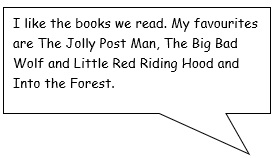Writing
"Without Language, one cannot talk to people and understand them; one cannot share their hopes and aspirations, grasp their history, appreciate their poetry or savour their songs."- Nelson Mandela
Writing Intent Statement
At Athersley North Primary School, we aim to provide a high quality Writing curriculum which will allow pupils to speak, read and write fluently so they are ready for the next phase of their education by the time they leave primary school.
Our school’s curriculum plan ensures all pupils access a high quality text as a driver for the writing with supporting supplementary texts to enhance their authorial style. We then use a cycle of gather, grammar and go to teach and embed different writing skills through a unit. This cycle focuses on the features of a text, the grammar behind a text, the vocabulary that underpins the writing process as well as emphasising the importance of presentation through high expectation of handwriting and spelling so pupils are able to take responsibility for their own work. Our writing units focus around audience and purpose so pupils are able to reason and explain why they are writing in this way. We extend the children’s learning of text types by providing additional writing opportunities across the range of curriculum subjects.
By the time pupils leave Athersley North Primary School, we aim to ensure they are effective, independent writers who can articulate their thoughts and ideas with skill and expertise.
Our School Novels
We believe that well-selected books should be at the core of our English curriculum. Our literature spine ensures that children are immersed in high-quality, varied texts. Each book is studied in-depth with children producing two pieces of extended, independent writing every half term. This ensures children have studied a breadth of texts and experienced writing in a range of genres, forms, and styles.
Year A Novels

Year B Novels

To ensure a balanced coverage of knowledge and skills and text types, our Long Term Plan identifies text types that will link to the novels as well as supplementary texts which will enhance children’s understanding and allow them to make decisions as an author.
Writing Long Term Plan
Writing Implementation
Children are taught in three-stage cycles. First, we GATHER information about our text, text-type and vocabulary. This will often involve hooks to excite and inspire our children.


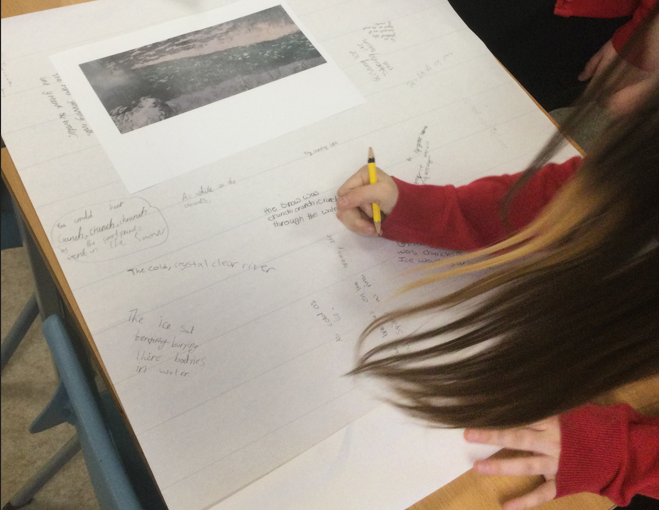
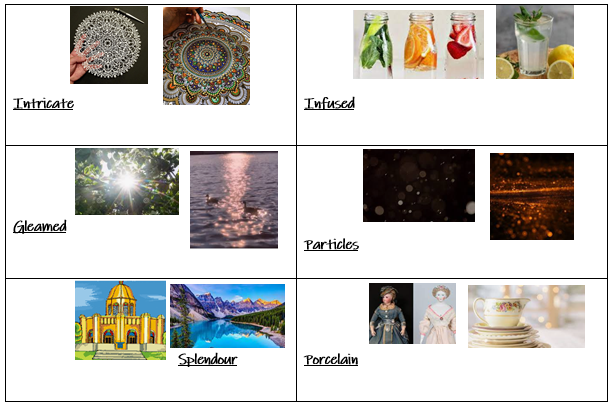
The next stage in our learning journey is the GRAMMAR week. Here we take the context of our novel and add to our work in ‘gather’. The grammatical knowledge and skills, which will be required in the next stage, are taught and practised giving children the opportunity to develop their understanding. In this phase, children also practise different planning formats in preparation for their writing.
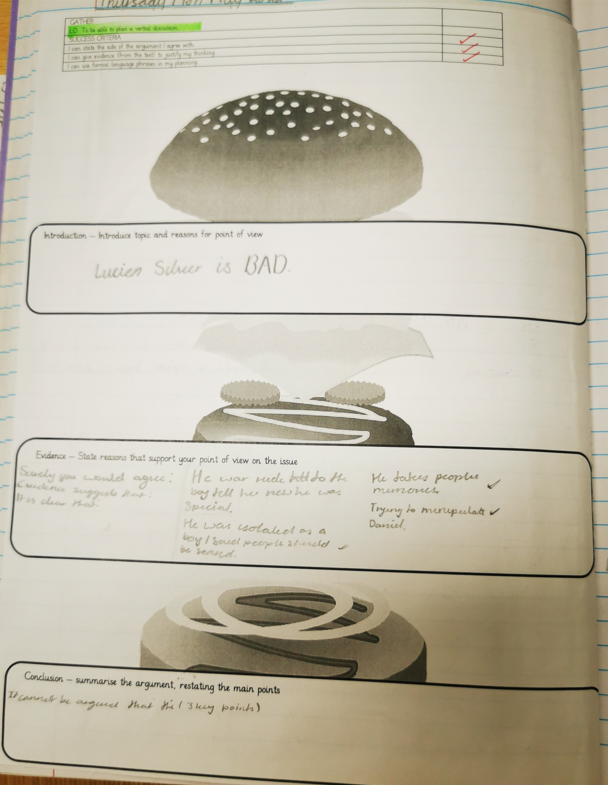

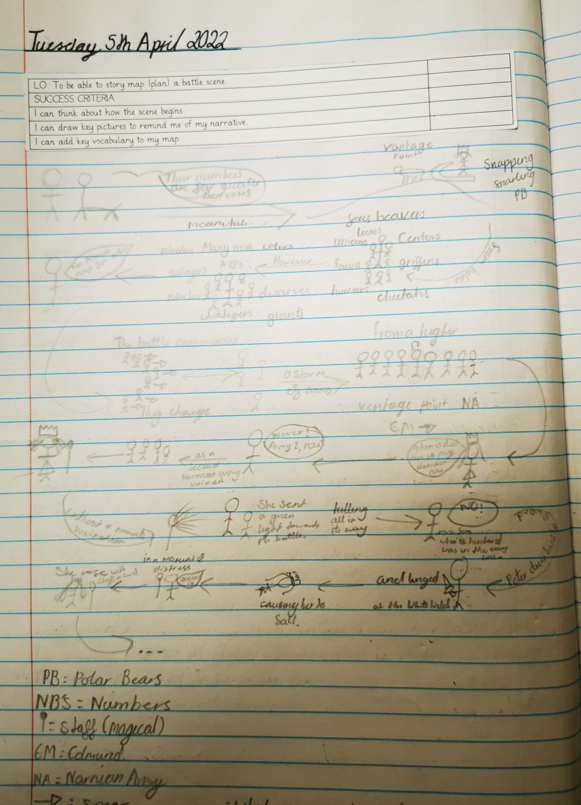

Finally, we combine all of our knowledge and skills and GO! Here, the children create their independent pieces of writing using the text-type example, vocabulary, knowledge from the novel and grammatical features. We focus on giving the children autonomy of their own work by providing multiple self and peer assessment opportunities. From this, children can begin to edit and improve their work before its final publication.


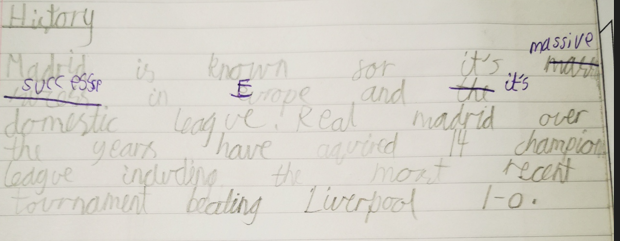
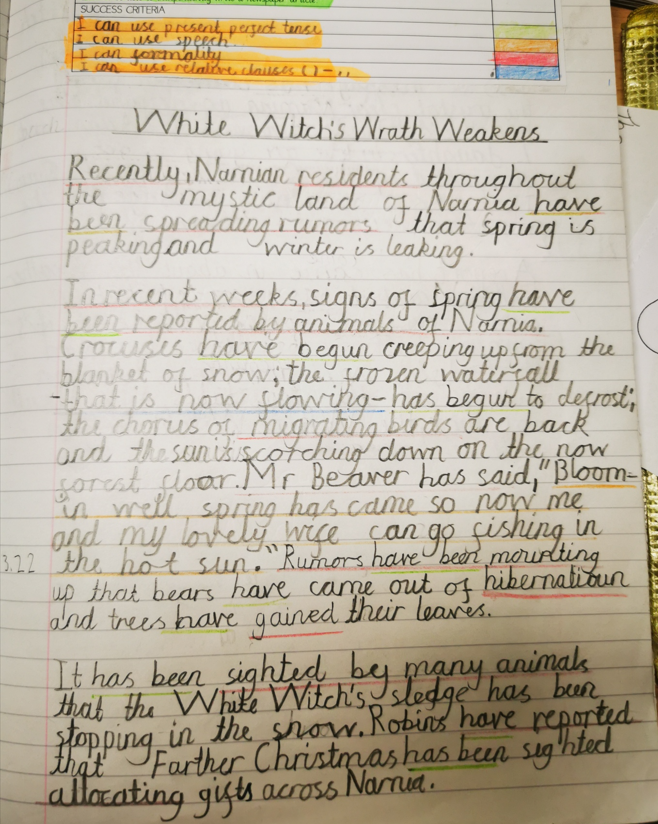
Spelling and Handwriting
In KS1, Read Write Inc is used to enhance our children’s letter formation and writing skills alongside their reading development. In KS2, our spelling and handwriting takes place in discretely taught lessons. We use the Read Write Inc Spelling programme to ensure consistency with our Phonics teaching as well as ensuring coverage and the incremental deepening of understanding within and across year groups.
We use the ‘Letter Join’ scheme for practising handwriting.
Writing Impact
As a result of making links across our learning, developing knowledge and skills and enhancing our use of vocabulary through specific speaking and listening opportunities, children are more enthused with their learning in writing lessons.
